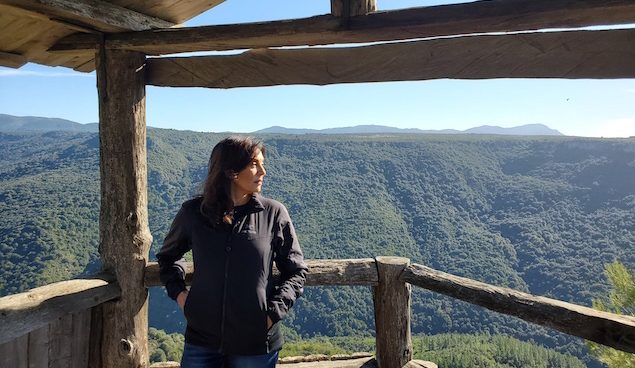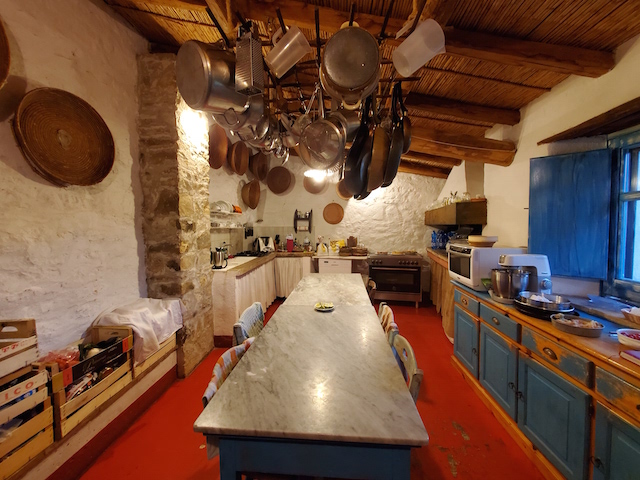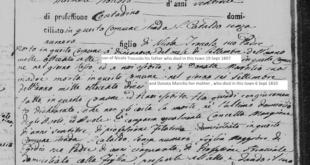I’ve traveled extensively throughout mainland Italy over the past 20 years. I love the subtle and sometimes not-so-subtle differences in the regions from north to south and east to west. However, my trip to Sardinia this past November was my first encounter with the island.
Italy’s second largest island after Sicily, Sardinia is best known for its beaches and emerald coast. I visited for a completely different reason. I was on a mission to see as much of the interior of the island as possible. In particular, I wanted to visit the villages that comprise the island’s “Blue Zone.”
What exactly is a Blue Zone? It’s a demographic region where people live active lives past the age of 100. They have generally positive attitudes and a low incidence of heart disease, diabetes, Alzheimer’s and other common chronic illnesses.
This small area of Sardinia has fascinated demographers, medical researchers, psychologists, and anyone studying extreme longevity and overall physical and mental health, including the National Geographic magazine and its team of photographers. As an Italian-American nutritionist, the trip was a must for me and long overdue. I’ve studied longevity and made presentations on the topic for community groups and at conferences, but I needed to explore the phenomenon first hand, meet with local researchers and talk to actual centenarians. What I saw and experienced was extraordinary and transformational, both personally and professionally.
I spent my first evening in Sardinia’s capital, Cagliari, population 154,083. Despite the small number of residents, Cagliari was a bustling metropolis with heavy traffic and commuters from the surrounding areas arriving to their work places.
I immediately sensed a difference from mainland Italy. It seemed to be almost a separate country, rather than the typical Italy that I know and visit often. I asked my guide if people living in Sardinia consider themselves Sardinians first and Italians second. The answer was a resounding yes.
Following a night’s rest, I was ready for my journey to the Blue Zone, located about 70 kilometers north of the capital, situated in the Nuoro/Barbagia region. The entire island of Sardinia is not a Blue Zone and it does not necessarily enjoy the same health and longevity. In fact, I was surprised to learn the majority of Sardinians living outside the Blue Zone encounter the same rates of heart disease, diabetes and other chronic illness as the rest of the western world.
The first big surprise came on day one of the journey, while meeting with Dr. Maria Chiara Fastame from the University of Cagliari. Dr. Fastame is a published research scientist who studies the disposition and resilience of the centenarians. I assumed the lifestyle of the people living in the villages was one of reduced stress, a perfect diet and of course living in a beautiful environment. However, one of her opening comments was “life in the villages of the Blue Zone was no Shangri-La.” The denizens live a Spartan and physically demanding life. The terrain is mountainous, rugged and mainly undeveloped. Dr. Fastame and other researchers estimate the average distance a villager walks in a day is between six and eight miles.
Village men are mainly shepherds, spending months away from their families while living in the forest with their flocks. Because they are miles from home, there’s no opportunity to return each evening. Their diet is determined by what they can forage in the woods. They eat bread that keeps for long periods of time, layered with thin slabs of lard from pigs that the families raise. Life for the families living at home isn’t much easier. They tend gardens and prepare food to bring at various intervals to the shepherds, raising children that they brought into the world on their own and with the help of the community.
Despite what we might consider a harsh way of life, Dr. Fastame reports that older adults from the Blue Zone display an unusual combination of low level of mental illness and high level of perceived wellbeing. Both contribute to high resilience in the face of adversity. This pattern is, to an extent, unexpected because low socioeconomic status is more often associated with worse mental health and wellbeing.
 I soon met with Marcella, age 99, living quite well on her own. She is the wife of a shepherd. Her husband died two years ago at the age of 102. I asked her what life was like 75 years ago when her husband was gone for long periods and their living conditions were especially difficult. The simplicity and wisdom of her answer took me aback. “We did not waste our lives chasing things outside of the possibilities for our lives, and our minds were free,” she responded. Her response revealed a unique acceptance and gratefulness for life as it is — even while living through the deprivation of two world wars! Today, Marcella lives in the same home she and her husband built many decades ago and her family checks in on her each day.
I soon met with Marcella, age 99, living quite well on her own. She is the wife of a shepherd. Her husband died two years ago at the age of 102. I asked her what life was like 75 years ago when her husband was gone for long periods and their living conditions were especially difficult. The simplicity and wisdom of her answer took me aback. “We did not waste our lives chasing things outside of the possibilities for our lives, and our minds were free,” she responded. Her response revealed a unique acceptance and gratefulness for life as it is — even while living through the deprivation of two world wars! Today, Marcella lives in the same home she and her husband built many decades ago and her family checks in on her each day.
As I continued meeting other Sardinians living long and purposeful lives, I sensed a strong foundation and support system from family and friends. There is genuine caring for others whether they old or young, sick or well, together or alone. In fact, when I visited the small village of Seulo, known for its centenarians, I noticed keys in the doors of almost every home. Keys are left in the door in case anyone wants to stop in to visit or help the oldest of the old. Everyone knows each other and a sense of trust and safety prevails within the villages.
As a nutritionist, I was innately interested in the diet of the centenarians. It was no surprise learning they mainly eat what they can grow in their gardens, raise as livestock, forage from the woods and preserve for later consumption. Cheese is made from the milk of their goats and each family owns a pig that eventually contributes to their diet, but meat consumption is very low. Potatoes, wild mushrooms, wild greens, garden vegetables and minimally processed whole grains comprise most of the daily diet. Minestra, or vegetable soup, is a staple as well. I also noticed high consumption of walnuts from trees they grew seemingly everywhere. Families snack on them after lunch and dinner and sometimes while sitting by their fireplaces. Everyone has a fireplace at home as central heating mainly doesn’t exist on the island.
Being immersed in the Blue Zone was enchanting and unsettling at the same time. While I know we can’t live like the residents there, I found myself asking how humanity could dial back a bit on some of our “progress” and tap back into our sense of wonder about life, our acceptance of and gratitude for what we have, and our kindness toward one another. As I boarded the plane to return home, I wanted to carry all that I saw back to the states and share so much of it with others. While we can’t — and might not want to — live like the denizens of the Blue Zone, there is so much that we can learn from them and attempt to integrate into our daily lives.
If you’re interested, I will be blogging more information, details and photos on my website at https://www.foodnotmeds.com/
The above appears in the February 2020 issue of the print version of Fra Noi. Our gorgeous, monthly magazine contains a veritable feast of news and views, profiles and features, entertainment and culture. To subscribe, click here.
 Fra Noi Embrace Your Inner Italian
Fra Noi Embrace Your Inner Italian










Thank you so much for all the info! Fascinating! My name is Yulia, I am a 32-year Ukrainian living in Copenhagen. I am getting ready for my solo trip to Sardinia in November with the purpose to explore the blue zones!
I would really appreciate any tips from you about where is it most strategically to stay to be as close as possible to the blue zone villages! I am planning to rent a car.
Thank you very much in advance!
Hello Yulia, I’m so excited for you that you will be visiting the Blue Zone of Sardinia. It’s a beautiful and fascinating place. If you want to focus on the Blue Zone it’s important to stay in one of the villages in the Blue Zone. As we know, not all of Sardinia represents the Blue Zone. Stay in the nuoro region. If you search for hotels there you will be in the “Blue Zone.” I was going to attached a map but the program doesn’t accommodate attachments. But, a quick search should identify it. There aren’t alot of hotels in the area but they are comfortable. Have a wonderful experience! Carol
Hi Carol, very informative post! I am considering traveling to the nuoro region in December; however, I am struggling to find transportation from the Cagliari Elmas Airport. May I ask how you made it to nuoro? I am considering renting a car but would prefer to take public transportation. Also, I am wanting to explore Sardinia to connect with the local centenarians to learn more about their daily living behaviors, as I am highly interested in health and longevity (I just graduated with a BS in nutrition and am planning to attend PA school). I was also wondering how you were able to connect to the locals and gain these valuable experiences.
Caroline
Good Afternoon Carol & family, How are you doing? I am Danny. While searching for farm stays in Barbagia Blue Zone, I found this article. I first learned about Blue Zones from the 2005 National Geographic article that included Sardinina. My girlfriend and I are looking for a Blue Zone farm family(no wifi! LOL) we can stay with for a few days in end of April to learn more about the Blue Zone lifestyle and food. When I was a teenager. I lived and helped on a German farm I love to help and learn! Do you teach your guests about those? If not, please give me the name and email of a few families in your Nuoro region that do. I speak very little Italian (but will learn more before our trip), so the Italian half of this message was translated by computer. Grazie. Molto Bene! haha
PS My girlfriend and I helped my 90 year young Mom improve from Dementia. Her brain improved 50% in only six months! Unfortunately she died later but NOT from Dementia! Mom and I are from Bavaria just a little distance north east of you. haha. She & my girlfriend are such beautiful spirits! I’m still working on getting there! 😀
Hi Danny! Jay here. How did your trip go? Im going May ’24. Please advise about Blue Zone farms. thanks.
Hello,
My daughter is on her way to Europe. She will be there 5/7-5/11.
Is there way we can visit the village in Blue Zone and learn their live style.
Learn how to eat cook etc, Thanks ahead.